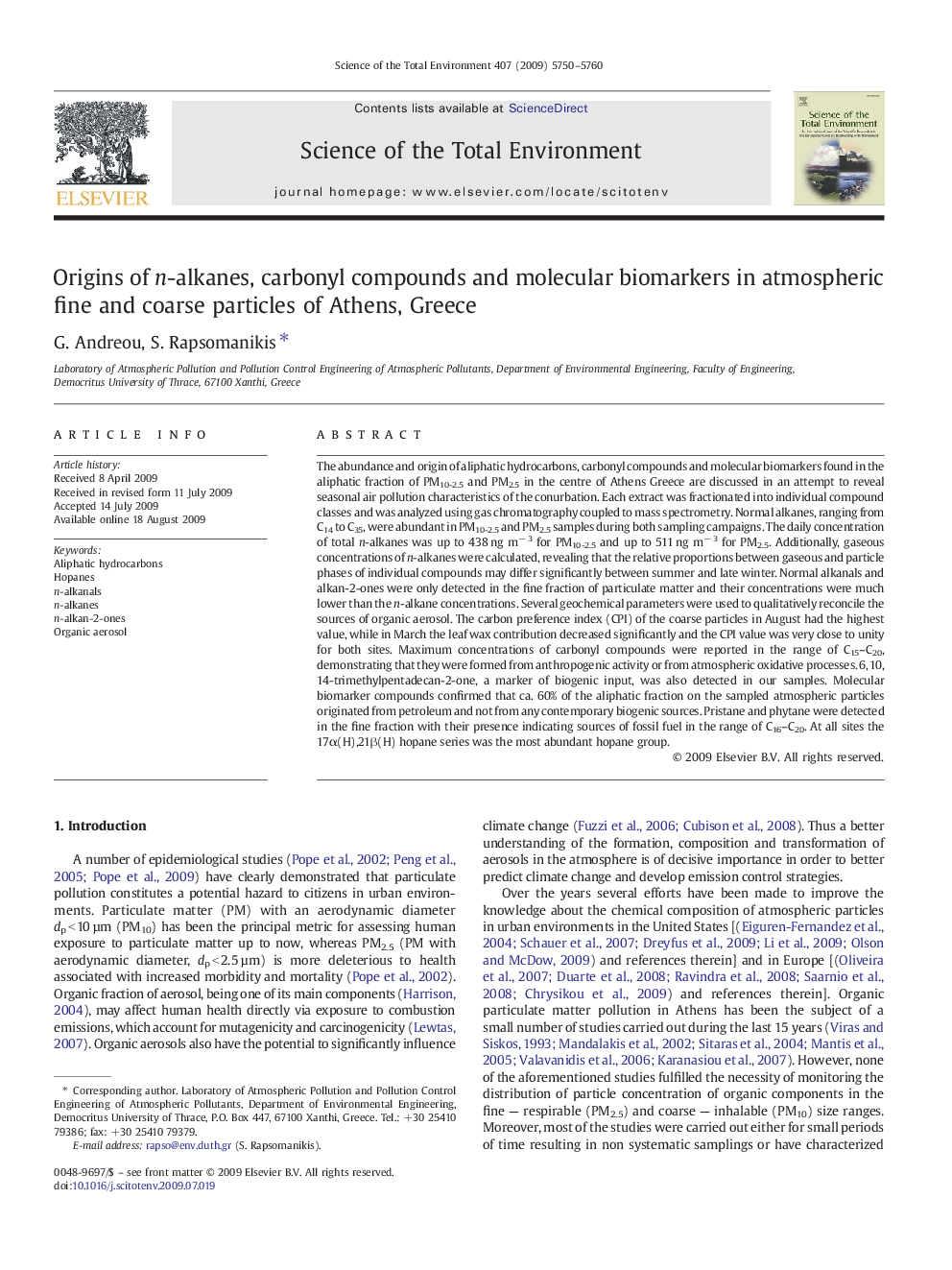| کد مقاله | کد نشریه | سال انتشار | مقاله انگلیسی | نسخه تمام متن |
|---|---|---|---|---|
| 4431669 | 1619889 | 2009 | 11 صفحه PDF | دانلود رایگان |

The abundance and origin of aliphatic hydrocarbons, carbonyl compounds and molecular biomarkers found in the aliphatic fraction of PM10-2.5 and PM2.5 in the centre of Athens Greece are discussed in an attempt to reveal seasonal air pollution characteristics of the conurbation. Each extract was fractionated into individual compound classes and was analyzed using gas chromatography coupled to mass spectrometry. Normal alkanes, ranging from C14 to C35, were abundant in PM10-2.5 and PM2.5 samples during both sampling campaigns. The daily concentration of total n-alkanes was up to 438 ng m− 3 for PM10-2.5 and up to 511 ng m− 3 for PM2.5. Additionally, gaseous concentrations of n-alkanes were calculated, revealing that the relative proportions between gaseous and particle phases of individual compounds may differ significantly between summer and late winter. Normal alkanals and alkan-2-ones were only detected in the fine fraction of particulate matter and their concentrations were much lower than the n-alkane concentrations. Several geochemical parameters were used to qualitatively reconcile the sources of organic aerosol. The carbon preference index (CPI) of the coarse particles in August had the highest value, while in March the leaf wax contribution decreased significantly and the CPI value was very close to unity for both sites. Maximum concentrations of carbonyl compounds were reported in the range of C15–C20, demonstrating that they were formed from anthropogenic activity or from atmospheric oxidative processes. 6, 10, 14-trimethylpentadecan-2-one, a marker of biogenic input, was also detected in our samples. Molecular biomarker compounds confirmed that ca. 60% of the aliphatic fraction on the sampled atmospheric particles originated from petroleum and not from any contemporary biogenic sources. Pristane and phytane were detected in the fine fraction with their presence indicating sources of fossil fuel in the range of C16–C20. At all sites the 17α(Η),21β(Η) hopane series was the most abundant hopane group.
Journal: Science of The Total Environment - Volume 407, Issue 21, 15 October 2009, Pages 5750–5760